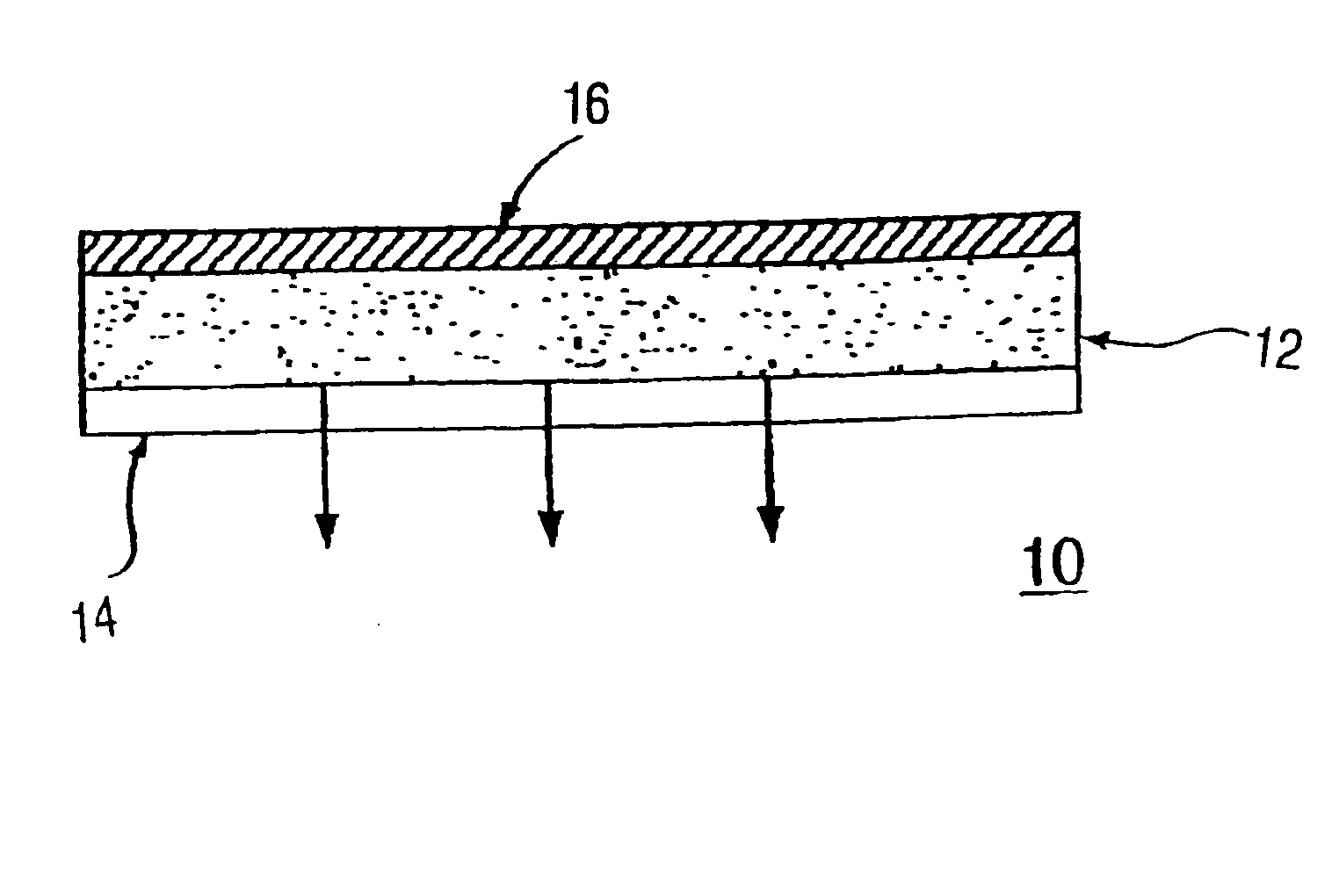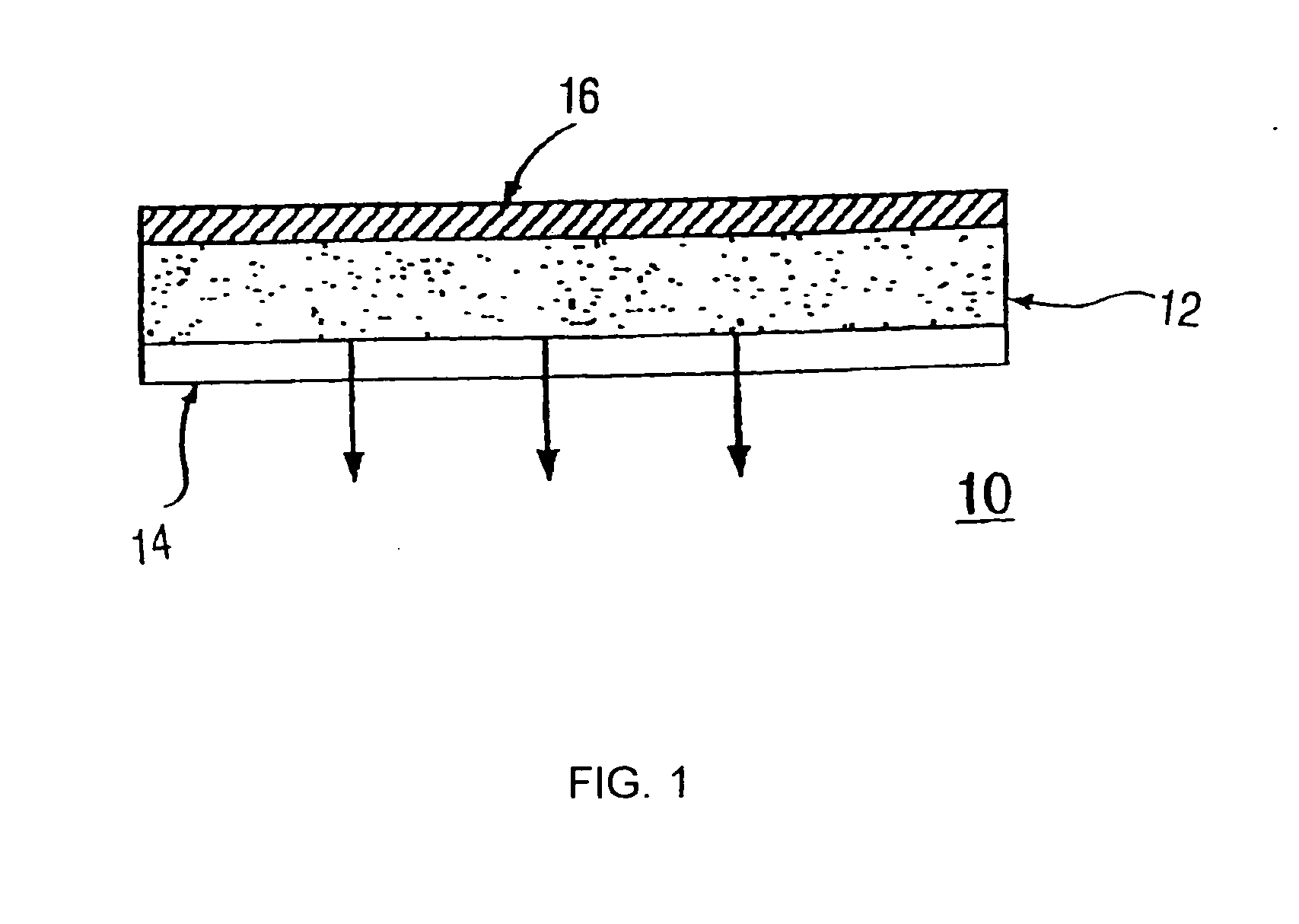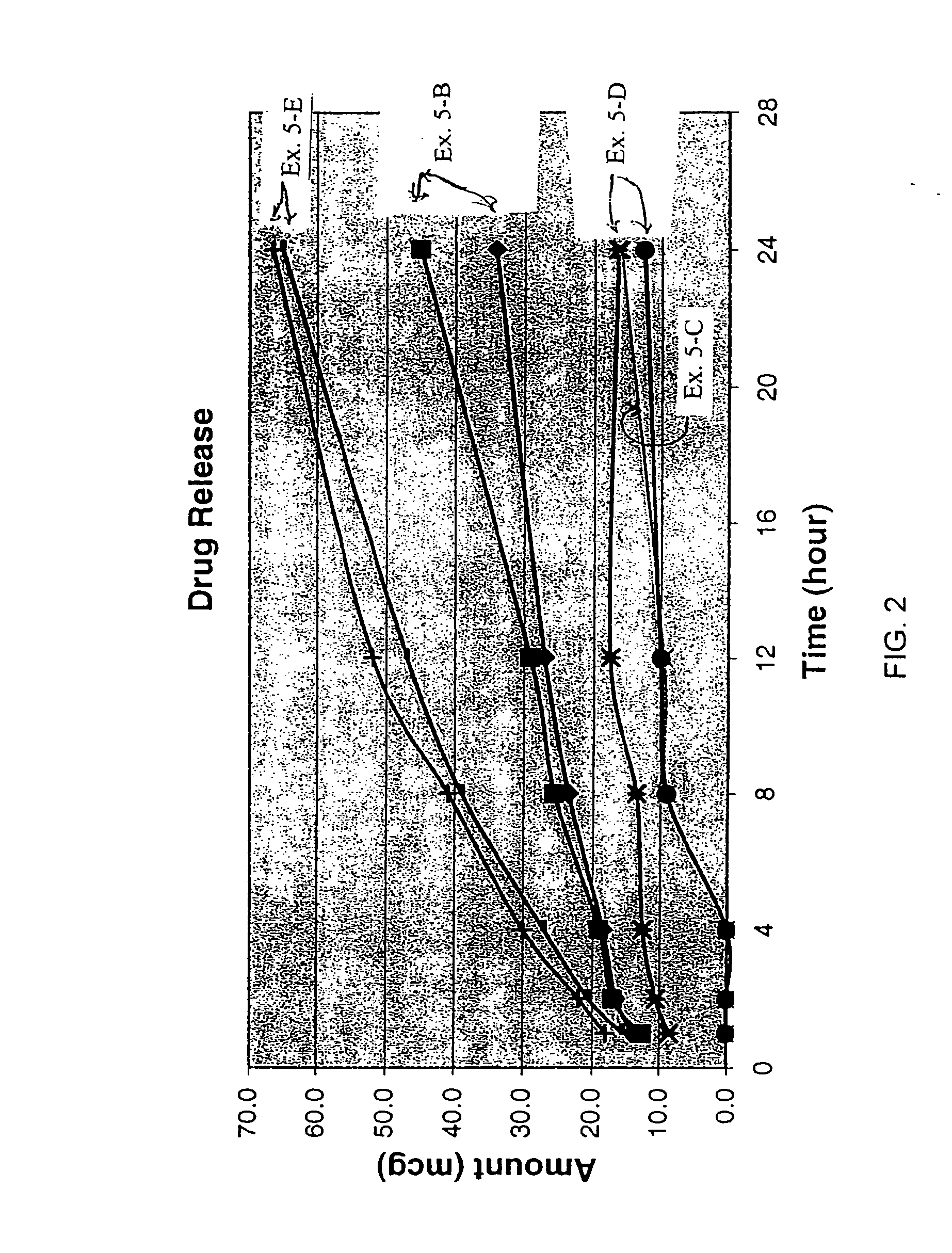Transdermal Antiemesis Delivery System, Method and Composition Therefor
a technology of antiemesis and transdermal antiemesis, which is applied in the direction of drug compositions, biocide, bandages, etc., can solve the problems of difficult control of nausea and vomiting associated with cancer chemotherapy and radiotherapy, significant discomfort for patients, and difficulty in using as a means of drug delivery to patients
- Summary
- Abstract
- Description
- Claims
- Application Information
AI Technical Summary
Benefits of technology
Problems solved by technology
Method used
Image
Examples
example 1
[0109] This example illustrates transdermal skin adhesive compositions and patches containing varying amounts of granisetron, varying amounts of penetration enhancers and water-insoluble pressure sensitive adhesive in the drug-in-adhesive (DIA) matrix, in the amounts indicated in Table 1.
[0110] The compositions and patches were prepared generally by the procedure of Method IV, except that both the drug load and permeation enhancer content in the skin adhesive composition were varied, as shown in Table 1. The total granisetron base content, based on the weight of the dry DIA matrix of the transdermal patch, was varied in the range of about 4.5 to about 9 weight %. The total amount of penetration enhancer in the skin adhesive composition was varied from zero to about 40 weight %, based on the weight of the dry DIA matrix of the transdermal patch, and the remainder of the DIA matrix composition was made up of a commercial polyacrylate adhesive (GELVA® 3083).
TABLE 1PenetrationPenetra...
example 2
[0113] This example illustrates the skin permeation of granisetron through human cadaver skin, in vitro, from each of the patches of Example 1 (A-L).
[0114] Skin permeation was performed in vitro using human cadaver skin mounted on a Franz cell, having side-by-side skin permeation cells as described in Skin Permeation Method I, except that the medium used in the receptor cell was 50 mM pH 7.4 phosphate buffered saline (0.85% sodium chloride). For testing, the skin was cut into squares of a dimensional size of about 2 cm×2 cm and each transdermal patch of Example 1 (A-L) was cut to a dimensional size of about 2 cm×2 cm square. The skin permeation rate in micrograms / square centimeters / hour (μg / cm2 / hr.) was determined by Method I using HPLC Method E (Table A). The skin permeation rate, the lag time in hours and % skin permeation relative to the skin permeation of the transdermal patch of Example 1-A are shown in Table 2 for three studies (Study 1, Study 2 and Study 3).
TABLE 2Relative...
example 3
[0116] The incorporation of granisetron base in various penetration enhancers and solvents was determined by incrementally adding small amounts of the drug to about 100 ml of liquid penetration enhancer, and agitating the liquid mixture until the drug was no longer incorporated (i.e., saturation) to provide an apparently saturated liquid mixture at an ambient room temperature in the range of about 20 to about 25° C. Each of the saturated liquid mixtures was agitated by inverting for about 24 hours at ambient room temperature, the solution was centrifuged and its supernatant was diluted in HPLC mobile phase and assayed by the HPLC method as described in Example 2.
[0117] The solubility of granisetron base determined in micrograms / ml of permeation enhancer is shown in Table 3.
TABLE 3Granisetron Solubility*Penetration Enhancer(μg / ml.)PEG-40045.71Propylene glycol31.71BRIJ ® 3041.24SPAN ® 2032.94Isopropyl myristate5.46NMP196.39DGME (transcutol)86.6DDAIP (free base)7.17Limonene8.59
Notes...
PUM
| Property | Measurement | Unit |
|---|---|---|
| Temperature | aaaaa | aaaaa |
| Mass | aaaaa | aaaaa |
| Density | aaaaa | aaaaa |
Abstract
Description
Claims
Application Information
 Login to View More
Login to View More - R&D
- Intellectual Property
- Life Sciences
- Materials
- Tech Scout
- Unparalleled Data Quality
- Higher Quality Content
- 60% Fewer Hallucinations
Browse by: Latest US Patents, China's latest patents, Technical Efficacy Thesaurus, Application Domain, Technology Topic, Popular Technical Reports.
© 2025 PatSnap. All rights reserved.Legal|Privacy policy|Modern Slavery Act Transparency Statement|Sitemap|About US| Contact US: help@patsnap.com



